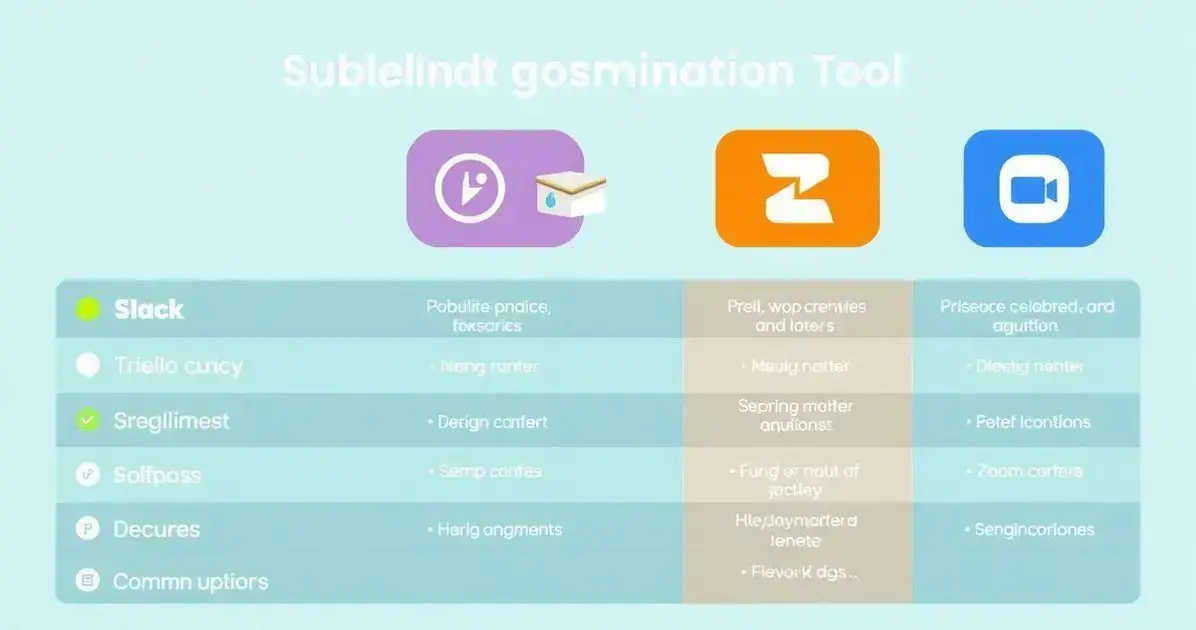Announcements
Remote team collaboration tools are transforming the way teams work together, no matter where they are located. In today’s fast-paced, remote work environment, having the right tools is essential for maintaining productivity and ensuring effective communication among team members.
This article will explore various types of remote collaboration tools that can enhance teamwork, provide insights into their key features, and offer practical tips for implementation.
Understanding Remote Team Collaboration Tools
Understanding remote team collaboration tools is key to improving productivity in your business. These tools help team members communicate and work together, no matter where they are. With features like chat, video calls, and file sharing, these tools make it easier to stay connected and on track with projects.
Announcements
Many remote collaboration tools offer unique features that suit different needs. For example, some focus on real-time communication, while others emphasize project management. Choosing the right tool depends on your team’s workflow and what fits your business goals best.
Using remote team collaboration tools can lead to better teamwork and higher efficiency. By embracing these technologies, businesses can create a more connected work environment. This, in turn, allows teams to share ideas, solve problems quickly, and ultimately contribute to the overall success of the company.
Announcements
Key Features of Effective Collaboration Tools
When looking for effective collaboration tools, it’s important to consider features that support teamwork and communication. One key feature is real-time messaging, which allows team members to chat instantly. This quick communication helps everyone stay informed and reduces misunderstandings.
Another essential feature is video conferencing. Video calls help teammates connect face-to-face, making discussions more engaging and personal. This is especially important for remote teams, as it helps build a strong feeling of trust and camaraderie among members.
File sharing capabilities also play a major role in effective collaboration. With the ability to share documents and updates easily, team members can work on projects together without delays. These combined features create a seamless experience, boosting productivity and helping teams achieve their goals more efficiently.
Comparing Popular Remote Team Collaboration Tools

When comparing popular remote team collaboration tools, it’s helpful to look at their features and how they fit different team needs. Tools like Slack are great for instant messaging and quick communication. They allow team members to create channels for specific projects, helping keep conversations organized and relevant.
Another strong contender is Trello, which focuses on project management. With its visual boards and cards, Trello lets teams easily track tasks and responsibilities. This can make it simple to see progress and prioritize work, helping teams stay on target.
Lastly, Zoom is widely used for video conferencing. It offers reliable video quality and a user-friendly interface. Zoom is perfect for virtual meetings and team check-ins, allowing everyone to connect regardless of their location. Comparing these tools helps teams find the right mix for their collaboration needs.
Tips for Implementing Collaboration Tools
Implementing collaboration tools can be a game changer for your team. To start, involve your team in the selection process. Ask for their input on which tools they believe would help them work better together. This involvement not only makes them feel valued but also ensures that the chosen tools fit their needs.
Next, provide training and support during the rollout of the tools. It’s important for every team member to understand how to use the tools effectively. Consider hosting training sessions or sharing easy-to-follow tutorials that make it easier for everyone to get started without feeling overwhelmed.
Lastly, encourage regular feedback after implementing the tools. Ask your team how the collaboration tools are working for them and make adjustments if necessary. This feedback loop will help you spot any issues early and improve the tools’ effectiveness in boosting productivity.
Measuring Success with Remote Collaboration Tools
Measuring success with remote collaboration tools is essential to understand how well they are working for your team. One effective way to track this is by looking at team productivity metrics. This can include the number of tasks completed on time, the quality of work produced, and how often team members communicate.
By reviewing these metrics, you can see if the tools are helping your team achieve their goals.
Another important aspect is gathering feedback from team members. Conduct regular check-ins or surveys to ask how they feel about the collaboration tools. Are they finding the tools helpful? Do they have suggestions for improvement? This feedback provides valuable insights into how the tools impact daily work and team dynamics.
Lastly, it’s useful to establish clear goals and benchmarks for using the collaboration tools. For example, you might set a target for how quickly projects should be completed or how often team members should check in with each other. By setting these goals, you can assess whether the tools are meeting their intended purpose and adjust your strategy as needed.
Integrating Collaboration Tools into Daily Workflow
To maximize the benefits of remote collaboration tools, it’s important to integrate them naturally into your team’s daily routine. Start by assigning specific tools to specific tasks — for example, use Slack for quick updates and Trello for tracking project progress.
Encourage consistency by making these tools part of your team’s communication habits. Instead of switching between emails and chats, streamline communication through a central platform. This reduces confusion and keeps everyone on the same page.
Over time, using these tools regularly will help your team build stronger habits and workflows, making collaboration smoother and more efficient across all projects.
Security and Privacy Considerations
When working remotely, security and privacy are just as important as communication and efficiency. Choose collaboration tools that offer strong encryption, two-factor authentication, and compliance with data protection regulations such as GDPR.
It’s also important to establish internal policies on how tools are used. Educate your team on best practices, like avoiding sharing sensitive information in unsecured channels or using strong passwords for tool access.
By prioritizing security, you protect both company data and your team’s trust — ensuring that collaboration can happen confidently and safely from anywhere.
Adapting Tools to Fit Your Team’s Culture
Every team has its own unique dynamic, and your collaboration tools should support — not disrupt — that culture. For creative teams, tools that allow for brainstorming and visual collaboration, like Miro or Notion, can enhance innovation.
For more structured teams, tools that emphasize task tracking and accountability, like Asana or Monday.com, may be a better fit. The key is to align your tools with your workflow and team preferences, not the other way around.
When tools complement your team’s natural communication style, adoption becomes easier and collaboration feels effortless — helping remote teams stay motivated, connected, and aligned.







